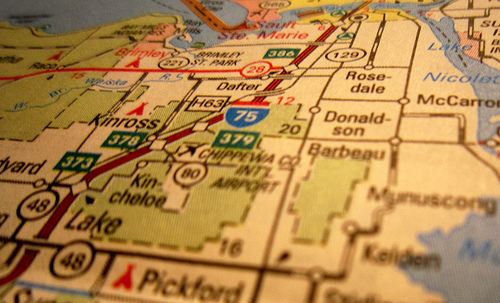
Photo Credit: Creative Commons
When the body has too much glucose in the blood because it can’t use it properly, it leads to the health condition diabetes. Diabetes is a life-long condition that is caused by the pancreas producing insufficient insulin (or none at all) that is needed to help glucose get into the body’s cells. Sometimes diabetes can be the result of insulin that is produced not working properly; this is called insulin resistance. Glucose originates from digesting carbohydrate and the body’s cells use it as fuel to give us energy.
Diabetes has two types: Type 1 and Type 2. With Type 1 the body produces no insulin so the cells cannot be unlocked. Type 2 diabetes is a condition where there is insufficient insulin or insulin is present but does not work properly.
Symptoms of diabetes include extreme tiredness, passing urine more frequently than usual, unexplained weight loss, blurred vision and increased thirst. Although at present there is no cure, diabetes can be treated by insulin injections or by administering it through a pump. A healthy diet and regular exercise are also an important part of successful treatment.
Traveling with diabetes
It’s perfectly possible to go travelling with diabetes as long as some important steps are taken before travelling, for during the journey and at the destination. Those with the condition will have a routine for taking medication, eating and exercise that helps manage the problem, and travelling is likely to disrupt that routine, at least for a little while.
It is important to try to manage the care regime, especially as meals will be taken away from home, time zones may change – especially of course on long-haul journeys – and physical activity may be affected. Carefully planning ahead by checking flight times or calculating how long a road trip might take, and then organizing the care to fit can avoid any potential problems.
What to remember when traveling
- Travel delays do happen so it’s wise to take twice the amount of supplies for diabetes that one could expect to need. Depending on what the prescription is, a traveler could buy Januvia to ensure that supplies didn’t run low.
- Blood glucose levels may drop so a supply of snacks or glucose gel will help keep levels up.
- Carry a health insurance card together with any emergency phone numbers, together with the name and phone number of the diabetic’s doctor. A bracelet or ID card indicating the condition will inform medical staff abroad or elsewhere in the country that a person has diabetes.
- Depending on the climate at the destination it may be necessary to check blood glucose levels more often. Cold or hot climates may affect how insulin and blood glucose monitors work.
- All supplies should be carried in hand luggage so they are easily accessible. Security restrictions allow essential medications, however, they will be screened.
- Work out time zone changes, especially where there will be a significant change in time, and plan a timetable to eat and take medication.
- If considered necessary, ask for a diabetic meal from an airline well in advance of travelling.


